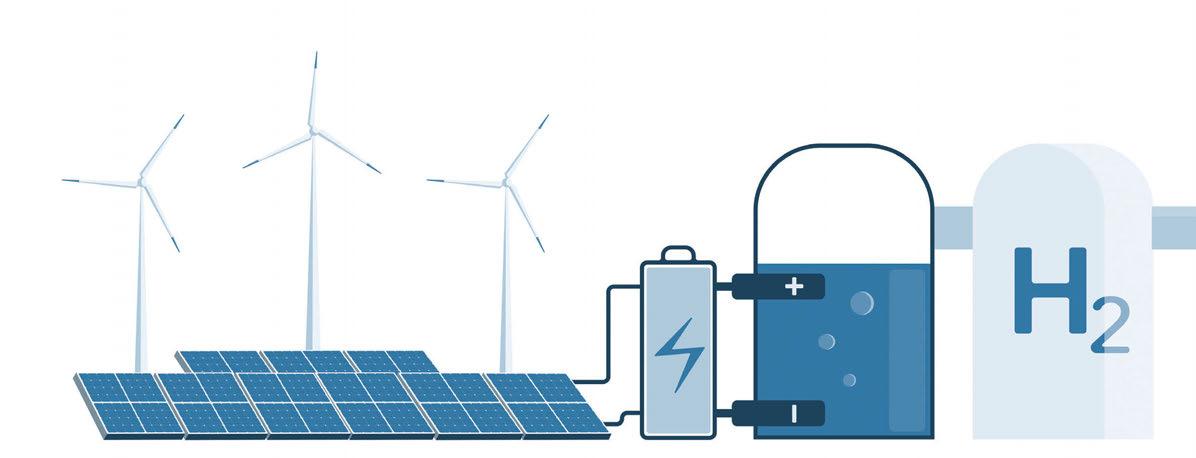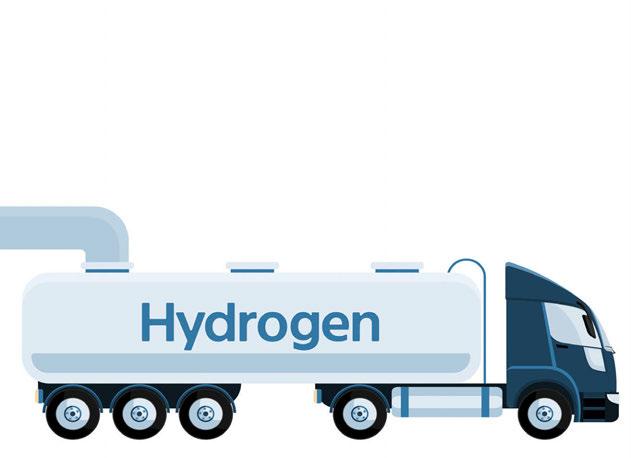
6 minute read
Hydrogen – the Future's Energy?
from AMPS Power 2021 Winter Issue
by AMPS
By Paul Ingram, Head of Operations at iPower Generation
iPower Generation are part of the Ingram Power Group. A team of companies offering a range of Generator and power systems for a wide range of applications. Working within these groups gives them a wider range of knowledge and ability to better serve their customers. iPower Generation represents the Green Power Generation division of the group, with their clean, Low Carbon, and efficient generators and power systems. They specialise in flexible instant response, energy storage and generation products, as well as OffGrid Electric Car Charging. www.ipowergeneration.co.uk
AS A CLEAN, ABUNDANT OPTION HYDROGEN COULD BECOME THE GO-TO ENERGY SOURCE IN THE FUTURE – SO WHY ISN’T IT ALREADY?
We are already mixing in hydrogen into our domestic gas, with one north east village in England receiving a blend of 20% hydrogen this summer in a ground-breaking trial. Hydrogen powered cars are among us, and hydrogen energy systems – whether combustion or fuel cell – aren't anything new. Burning hydrogen in a combustion engine produces zero CO2, and fuel cells only byproduct is water. Meaning it could play a vital and critical role in global effects to reach netzero emissions. One key issue faced by hydrogen as a fuel, is how it is produced.
HYDROGEN SOURCES
Hydrogen is the most abundant substance in the universe, making up roughly 75% of all normal matter. However, while there's a lot of it, it is not naturally found in high concentration on Earth, therefore it must be produced. Hydrogen is in compounds, such as in water (H2O) to be used as a fuel source it needs to be separated from the other elements.
As a result, point of use may be fantastic in terms of emissions providing power with clean air, however, where the hydrogen came from and the power source used to produce it can indeed have an environmental impact. While hydrogen is colourless, how it is produced is defined as – black, brown, grey, blue, and green. Black and brown, as you may have guessed are worst in terms of emissions, both coming from coal.
Grey is generated from natural gas, or methane, through a process called steam reforming, and is the most common form. Blue is whenever carbon capture and storage is used in conjunction with steam reforming. Blue hydrogen is therefore often described as "low carbon". With only about 10-20% of the carbon generated not being able to be captured. Green hydrogen, often referred to as "clean hydrogen", gets its hydrogen from water using a process called electrolysis, importantly, powered by renewable and clean energy sources, and so creating zero emissions in hydrogen production. Unsurprisingly, green is the ideal form. This would result in zero emissions at hydrogen production, and then no carbon dioxide created at point of use. Unfortunately, only about 1% of current hydrogen production is currently in this form. However, as the IEA (International Energy Agency) pointed out in 2019, as natural gas prices rise and renewable energy costs fall, we will start to see ever growing interest in hydrogen from electrolysis.
Standby and power generation through combustion.
As mentioned, burning hydrogen does not produce carbon dioxide (CO2), in fact the end products are just heat and water, as there are no carbon atoms for the oxygen atoms to combine with. Or at least that is the case when burned using pure oxygen. When using regular air there's still no carbon, but there is nitrogen. Oxygen can combine with this to form NOx. Combining a hydrogen generator with a battery front end would give you an instant and long running standby power system, while also dramatically reducing your carbon footprint. This is something that iPower Generation already do with natural gas and LPG gensets in replacement of diesel, and there's no reason hydrogen couldn't be used in the same way.
Energy storage application with hydrogen fuel cells.
Hydrogen fuel cells just use a chemical reaction to create their energy – no burning. A fuel cell uses hydrogen and oxygen to generate electricity, with the only by-products being water and heat.
Using electrolysis to create green hydrogen, and a fuel cell to generate electricity, equals no CO2 and no risk of NOx. It could, to oversimplify it, be seen as splitting water, then putting it back together again – only now it’s warm. On top of their green credentials, they're silent – perfect for late night or city generation where noise is an issue. They have a longer life cycle than batteries, and no moving parts meaning they're very reliable.
ELECTROLYSIS PROCESS TO PRODUCE HYDROGEN
CATHODE – ANODE +
Hydrogen e
➡
Power Supply
HYDROGEN BUBBLES
M e E M B R A N
Ee ➞ ➞
Oxygen
OXYGEN BUBBLES
e
➞H ➞ H
4H+ + 4e*➡2h2 Cathode Reaction 2h2O ➡ O2+ 4e* Anode Reaction
COMPOSITION OF A FUEL CELL
FUEL CELL STACK

Hydrogen Oxygen
Hydrogen H2 Fuel Anode Cathode
HE AT
H2 Recycling Proton (+ve) Electron (-ve)
Oxygen O from air 2
Air and water vapour
Gas diffusion layer Catalyst Proton exchange membrane This is where we at iPower Generation see huge future potential. Combining electrolysis to produce hydrogen and fuel cells to produce energy and used in applications like you would a battery. For example, in energy storage alongside renewable power sites. In this situation, when the site is producing energy, but power demands are low from the grid, use this energy for electrolysis to fill up hydrogen tanks. Then when demand is higher during peak times, use a fuel cell stack to generate power. This balancing of supply and demand can be applied to your solar, wind, or hydro site, and with general grid balancing. Again, this is something that iPower currently provide for using batteries. This makes your renewable site more efficient, increases financial returns, and is incredibly useful for the grid, but perhaps in the near future, hydrogen will be rivalling batteries for energy storage in applications like this. In the present day however, cost of fuel cells makes it hard to compete. But this could all be due to currently low investment and scales of production. Tackling steep manufacturing costs by creating large-scale production would lower the costs per fuel-cell. Furthermore, increased investment could also result in new innovations and advancements in its technology, perhaps in using less-expensive materials, currently platinum is heavily involved, and improvements in power ability per fuel cell, you currently need roughly 400 fuel cells to produce 120kW of power. All of which will further lower the cost of fuel cells.

iPower first got into hydrogen just over 2 years ago, and since then the pace of development in the industry has been rapid. Which looks to continue. The recent announcement of the government backing of HyNet North West for example, a project creating a hydrogen power infrastructure across the north west, targeting the decarbonisation of heavy industry, is a huge step in hydrogen use in the UK. Will the need for lower carbon energy continue to push the swift developmental pace of hydrogen? Will the issues above – little green hydrogen production capabilities and higher overall costs compared to other options – still be issues in 5 years? 10 years? Only time will tell.






